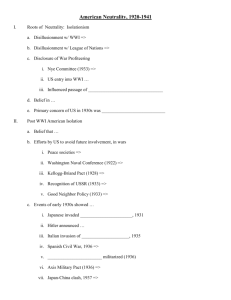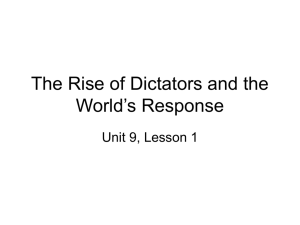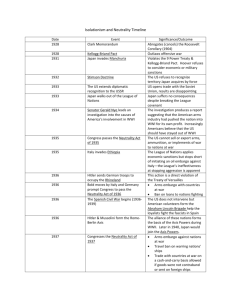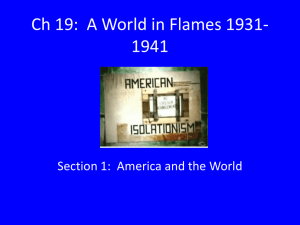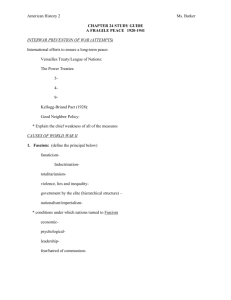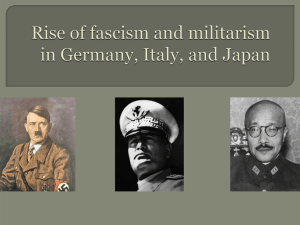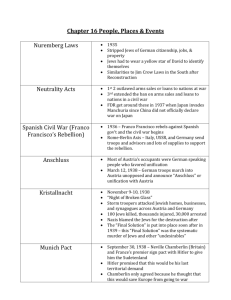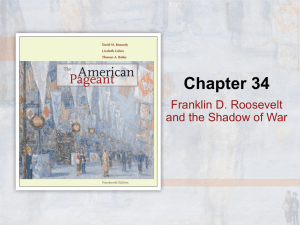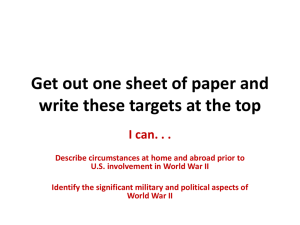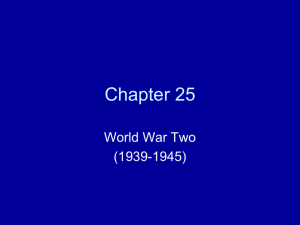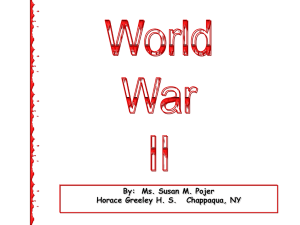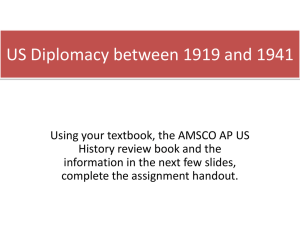PPT
advertisement
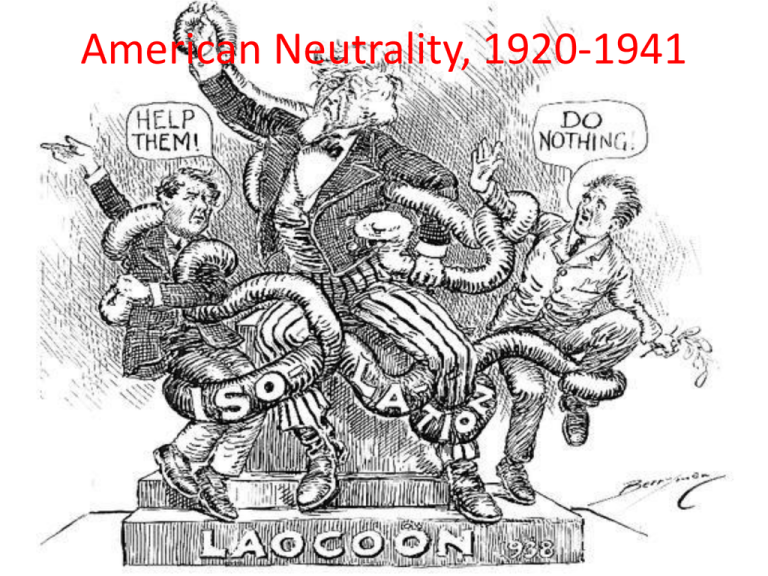
American Neutrality, 1920-1941 Roots of Neutrality: Isolationism • Disillusionment w/ WWI • Disillusionment w/ League of Nations • Disclosure of War Profiteering – Nye Committee, 1933 – US entry blamed on munitions industry! – Influenced Neutrality Acts • Belief in geographic protection • Primary concern was economics American Isolation, Post WW I • Belief that US involvement in WWI was a horrible mistake • Efforts by US to avoid future involvement – Peace societies (conservative and radical) – Washington Naval Conference, 1922 – Kellogg-Briand Pact, 1928 (outlawed war!) – Recognition of USSR, 1933 – Good Neighbor Policy (shift away from direct intervention in Latin America), 1933 American Isolation, Post WWI • Events of early 1930s showed America the agreements wouldn’t work – Japanese invade Manchuria, 1931 – Hitler announced Germany’s rearmament, 1935 – Italian invasion of Ethiopia, 1935 – Spanish Civil War, 1936 – Rhineland militarized, 1936 – Axis military Pact, 1936 – Japan-China clash, 1937 (WWII began in Asia) Totalitarianism v. Democracy Totalitarianism’s basic ideals • • • • Individual serves the state State is supreme State grants rights Militarism, force rule Major totalitarian rulers – – – – – Adolf Hitler (Germany) Benito Mussolini (Italy) Josef Stalin (USSR) Francisco Franco (Spain) Hideki Tojo (Japan) Democracy’s basic ideals • • • • State serves the individual People are supreme People have rights Emphasis on debate Major Democratic leaders – FDR (USA) – Neville Chamberlain (UK) – Eduard Daladier (France) American Isolation in Action, Post WWI • American reaction – Johnson Debt Default Act (no loans to WWI defaulters) – Neutrality Acts of 1935, 1936, 1937: Together, provided that if President said a foreign war was taking place, no sailing, sales, transportation of goods, or loans to any belligerent (would have kept US out of WWI) – FDR: “Quarantine” speech, 1937 (called for economic quarantine of aggressors v isolationism) Appeasement • Policy of European countries, towards threats to peace, despite strength of allied armies – why??? – Anschluss (Austria) 1938 – Hitler demanded Sudentenland (Czechoslovakia), 1938 – Munich Pact, Sept. 1938 • • • • • Neville Chamberlain (UK) Eduard Daladier (France) Hitler (Germany) Mussolini (Italy) “Peace in our time!” US Response to Appeasement • Buenos Aires Conference, 1936 (threat to one country in Western Hemisphere a threat to all) • Canada was brought under Monroe Doctrine, 1938 • Declaration of Lima, 1938: American nations agreed on common action, in crisis European War, 1939 • Hitler took rest of Czech, March 1939 • Italy attacked Albania, April 1939 • Germany & USSR sign NonAggression Pact, Aug. 1939 • Poland attacked by Germans, Soviets Sept. 1, 1939 American Response • Neutrality Act of 1939 – “Cash & carry” on munitions, for Allies (FDR influenced) – Germany designated as the aggressor • Declaration of Panama, Oct. 1939 – 300 mile “safety zone” declared around Western Hemisphere nations • Smith Act, 1940 – Illegal to advocate overthrow of US government • Draft reinstated, Sept. 1940 Lend-Lease • US program to supply allies with war supplies, from March 1941 to 1945 – US shipped a total of $50.1 billion (almost $700 billion, in 2007 dollars) to Britain, USSR, France, China – In return, US received about $7.8 billion (about $100 billion in 2007 dollars) worth of military bases in Newfoundland, Caribbean • US received no other repayment - & did not seek any repayment America’s Entry into the War • July 1941: Japan seized IndoChina • July 1941: America froze Japanese assets, established embargo on oil, gas, etc. • Nov. 1941: Japanese peace mission • Dec. 7, 1941: Pearl Harbor attacked (2,896 casualties, over 2100 deaths; 8 BB sunk or heavily damaged) • War declared on Dec. 8, retroactive to Dec. 7
